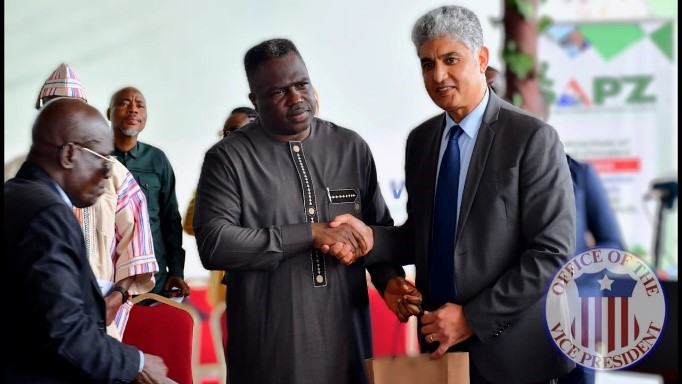Last week, price of iron ore headed for its biggest weekly drop since mid-February 2022, as China’s broad virus restrictions and worsening property crisis prevented a recovery in demand.
From China to Brazil, and in the EU Economic Zone, global market economists believe prices will average around US$110/t by the end of 2022, and then projected to average US$80/t in 2023—almost 30% percent drop in price by 2023.
Over the outlook period to 2027, it is forecasted further that prices will decline around -15% a year to reach US$55/t by 2027.
Considering that steel demand triggers iron ore demand, all drawn from demands in the construction industry, it is uncertain if the latest sluggish iron price will see recovery anytime soon.
This means for iron ore, the ratio of quantity of iron ore demanded compare to the price is between zero and one unit elastic or stable.
Iron ore price has also fallen in recent times due to excess supply. There are many countries, including Liberia, that are producing and shipping ore responding to global demand of the commodity.
In recent years, the price has never been stable because as a non-renewable natural resource, Iron Ore (Fe) is mined in around 50 countries worldwide and used to make steel (buildings, cars, white goods etc.).
The Government of Liberia (GOL) has been urged to move with urgency to resolve all its issues with the ArcelorMittal expansion deal and rectify it for the general benefit of the country.
“This will make sense because, all around the world, we are aware that economic growth is the primary factor that drives the supply and demand of commodities like iron ore,” observers told the Hot Pepper.
“When economies are growing, the need for steel in construction increases, which drives the price of iron ore up; so, in the case of what the world’s economy is experiencing now with the war in Ukraine, which has disrupted global supply chain, it would make sense to accept a one billion dollar investment in iron from ArcelorMittal Liberia.
“An attempt to delay the rectification and allow for a situation where the price of iron ore deteriorates on the global market will obviously force Mittal to pull out of any deal that would by then make no economic sense at all. We must not just limit the debate of the new AML deal to our local economic understanding,” they maintained.
Even growth in China (the world’s largest consumer of metals) has affected the price of iron ore so much recently that the spot price can almost be considered a proxy for China’s economic health.
According to investopedia.com, Brazil moved back to full production of about 380MT a year with goals to increase to 400MT. Current annual production is forecast to be about 335MT this year, and appears to be rising.
This must suggest to those making decisions for Liberia that since supply of ore on the global market is increasing, and demand for ore get on the decrease or remains the same, price of ore will always tend to fall to a lower equilibrium price and a higher equilibrium quantity of iron ore.
“While considering decision of the AML expansion, we must think about how China’s consumption of iron ore is slowing on a daily basis as the impact of stimulus measures fade.
“The government must also consider high prices incentivize production, new entrants into the market such as mineral resources expanded from contract mining and mining services to producing their own iron ore,” the observers noted.
In the medium term, the US, Japan, Germany and China are working to shift to using electric arc furnaces (EAF), which uses scrap steel and electricity rather than iron ore and cooking coal to produce steel.
Liberians must be aware that, as the global economy matures, it will not always be dependent on extractive resources whose price are extremely volatile. In fact, in developed countries like Singapore, people have started to generate scrap steel from buildings that are torn down and cars that are recycled.
“In the US, 70 per cent of steel is produced by EAF; in China, it is only 15 per cent. So you clearly see why the Government of Liberia (GOL) must move to accept the AML deal, which promises to significantly rise up production of premium iron ore, generating significant new jobs and wider economic benefits for Liberia.
“It is better to go into a deal that will create more than 2,000 jobs with Liberians envisaged to fill the majority of the roles created and is poised to be one of the largest mining projects in West Africa,” economic analysts underscored.
According to the World Bank’s latest Global Economic Prospects report, the global economy is entering a pronounced slowdown amid fresh threats from COVID-19 variants and a rise in inflation, debt, and income inequality that could endanger the recovery in emerging and developing economies.
Global growth is expected to decelerate markedly from 4.1 percent in 2022 and 3.2 percent in 2023 as pent-up demand dissipates and as fiscal and monetary support is unwound across the world.
“We can’t afford to miss out,” economic pundits emphasized.







